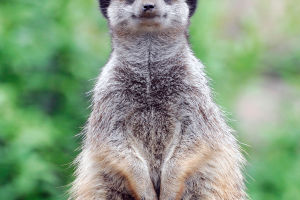The giraffe is one of the most unique animals on Earth, known for its towering height and graceful movements.
As the tallest land animal in the world, the giraffe's physical structure and lifestyle showcase the wonders of nature's design.
As the tallest land animal in the world, the giraffe's physical structure and lifestyle showcase the wonders of nature's design.
In this article, we will explore the giraffe's physical characteristics, feeding habits, habitat, and how they survive and reproduce in the wild.
First and foremost, the most striking feature of the giraffe is its neck. Although the neck appears extremely long, it is made up of seven vertebrae, just like humans and other mammals. These vertebrae are longer than those of ordinary mammals, giving the giraffe its impressive height.
The long neck allows giraffes to feed on leaves from the tops of trees, a resource that is not easily accessible to other herbivores. However, the long neck also presents challenges. For example, when drinking water, giraffes need to spread their legs and lower their heads to drink, overcoming the limitation of their neck length.
In addition to its neck, the giraffe's body is also quite distinctive. Grown up male giraffes can reach a height of up to 5.5 meters, while females are somewhat shorter. They have a strong build, long legs, and unique spotted skin. The giraffe's coat features yellow-brown and white patches, and the size and shape of the spots vary from individual to individual, serving as an important means of identification. Each giraffe's pattern is unique, much like human fingerprints.
When it comes to diet, giraffes are typical herbivores, primarily feeding on tree leaves, particularly preferring acacia trees, oak trees, and the tender leaves of other tall trees. The giraffe's tongue is especially long and flexible, allowing it to easily curl around branches and pull leaves down from trees.
Their tongues are purple due to a thick layer of pigment on the surface, which helps prevent sunburn. Since giraffes primarily eat tree leaves, their digestive system is specially adapted to this diet, with an efficient stomach structure that helps digest the fibrous plants.
Giraffes typically live in Africa's savannas, woodlands, and open forests. They prefer to live in groups, ranging from a few individuals to several dozen. Group living helps increase their vigilance, enabling them to detect potential predators like lions or cheetahs. While giraffes are large animals, they are not the fastest runners. Their speed is generally slow, but they can reach speeds of up to 50 kilometers per hour in short bursts.
In addition to group living, giraffes are also known for their unique social behaviors. Male giraffes engage in "necking" to compete for mating rights. This behavior typically involves two males using their necks to strike each other, attempting to drive the opponent away. The winner usually gains the opportunity to mate with a female.
When it comes to reproduction, the giraffe's gestation period lasts about 15 months, and females typically give birth to one calf at a time. A newborn giraffe weighs around 50 kilograms and stands at a height of 1.8 meters. The calf needs to stand up immediately after birth and start adjusting to life in the group. The mother provides continuous nursing to supply the necessary nutrition to help the calf grow.
In conclusion, the giraffe, as one of the most remarkable animals on Earth, fascinates us with its unique appearance and survival abilities. Whether it's their towering neck or their interactions with other animals, giraffes showcase the boundless wisdom of the natural world.


